Modern Instrumentation
Vol. 1 No. 2 (2012) , Article ID: 18952 , 5 pages DOI:10.4236/mi.2012.12003
Stability Study of the Metrological Characteristics of a ZnO/PS/C-Si Photodiode (PSiZ) Used as a Transfer Standard in the Visible Spectral Range
Groupe de Recherche en Métrologie des Rayonnements, Laboratoire Matériaux, Mesures et Applications (MMA), Institut National des Sciences Appliquées et de Technologie (INSAT), University of Carthage, Tunis, Tunisia
Email: *zhbenamor@yahoo.fr
Received December 15, 2012; revised January 18, 2012; accepted February 17, 2012
Keywords: Photodiode; Stability; Transfer Standard; Reflectivity; Radiometric Measurements
ABSTRACT
This paper presents the results of a stability study of a photodiode realized in the Laboratoire de Métrologie des Rayonnements (LMR-INSAT, Tunisia). The study was performed during six years and concerned with the photodiode optical and electrical characteristics. This study involves in one side, the reflectivity stability for different wavelengths and in the other side, the stability of the series and shunt resistances. The experimental results confirm the stability of the photodiode spectral response since the reflection coefficient maximum uncertainty is equal to 0.0055 with an experimental uncertainty of about 0.0016 (at 1s level) for the mean value of the reflectivity over the study duration. Moreover, the shunt and series resistances are equal to 5.14 kΩ and 7.61 Ω respectively with an uncertainty value of 0.01 kΩ and 0.04 Ω respectively (at 1s level). This photodiode does not display any ageing aspect. Consequently, the PSiZ photodiode can be used as a Transfer Standard for radiometric measurement in the visible spectral range.
1. Introduction
Cryogenic electrical substitution radiometers presently provide the basis for optical measurements in most national metrology institutes [1]. The performances of this radiometers type are proved but they are well known as complex systems. Their versatility and their ability to be used directly to calibrate a variety of optical detectors are limited. The photodiodes are widely used as detectors of optical radiation. .They combined high performance over a wide wavelength range with ease of use. The bibliography is full of studies and experiments performed on different types of photodiodes and prospecting different operations aspects [2-4]. Among those photodiodes, we can find some silicon photodiodes which are used in the visible field and presenting, for given wavelengths, sensitivities poorly stable in time. This instability is due primarily to the variations of the reflection coefficient of the photodiode front face and also because of the electrical properties variations.
In order to minimize these fluctuations and instabilities, we studied and produced a photodiode containing porous silicon on which we deposited a layer of ZnO [5].
This structure made it possible on the one hand to increase the absorption of the incident radiation in the porous structure thus increasing the spectral sensitivity of the photodiode and on the other hand, to reduce the reflection coefficient of the photodiode front face to 7% approximately and this in a spectral field between 400 nm and 800 nm. In order to be able to use this photonic structure as a Tunisian Transfer Standard for optical power measurement in the visible spectral range, we had indirectly calibrated it, in 2006, against the cryogenic radiometer of the National Institute of Metrology— France (INM-France) [6].
However, the stability over time of such PSiZ-based photodiodes and the enhancement of their optoelectronic characteristics (i.e. the reflectivity coefficient r and the electrical properties Rs and Rsh) has not been performed yet. Indeed, the long-term stability of the reflectivity coefficient and the shunt and series resistances implies the stability of the photodiode sensitivity and of the output current.
The aim of this work is to study the optical and electrical modifications of the PSiZ-based photodiode after using a ZnO thin film as transparent electrode and a passivation layer. The I-V characteristics and reflectivity measurements were used to investigate the device’s electrical and optical behaviors. Thus, this study allowed the evaluation of the effect of the layer degradation on the stability of the photodiode optical and electrical characteristics.
2. Structure of the Realized PSiZ Photodiode
The practical realization and the metrological characterization of the photodiode produced at the Laboratory of Radiations Metrology (LMR-Tunisia) in collaboration with the Photovoltaic Team of the Institut National de la Recherche Scientifique et de Technologie—Tunisia (INRST-Tunisia) were the objects of scientific publications [5,6]. In what follows, we will limit to give the essential. The structure of the photodiode is presented in Figure 1. The PSiZ photodiode is a silicon based photodiode of 8 mm diameter [5]. The photodiode is built starting from a substrate of single-crystal silicon initially doped with the boron in a first step and in a second step doped with phosphorus for obtaining a junction pn+. On the doped part n+, a layer of porous silicon is carried out using the method of electrochemical anodization. An aluminium-silver electrode is spread out over all the back-face of the photodiode (p-type) and a second electrode, in the form of a ring, is deposited on the front-face (n+-type). Thereafter, a layer of ZnO is deposited using spray over aged porous silicon, thus acting as a transparent electrode. The reflectivity of the produced photodiode is about 7% on average along a wavelength range from 400 nm to 800 nm. This represents a gain of approximately 30% on average compared to the classically marketed photodiodes [1].
The study of the I-V responses allowed the determination of the series resistance Rs and the shunt resistance Rsh of the PSiZ photodiode. The results obtained are Rs =
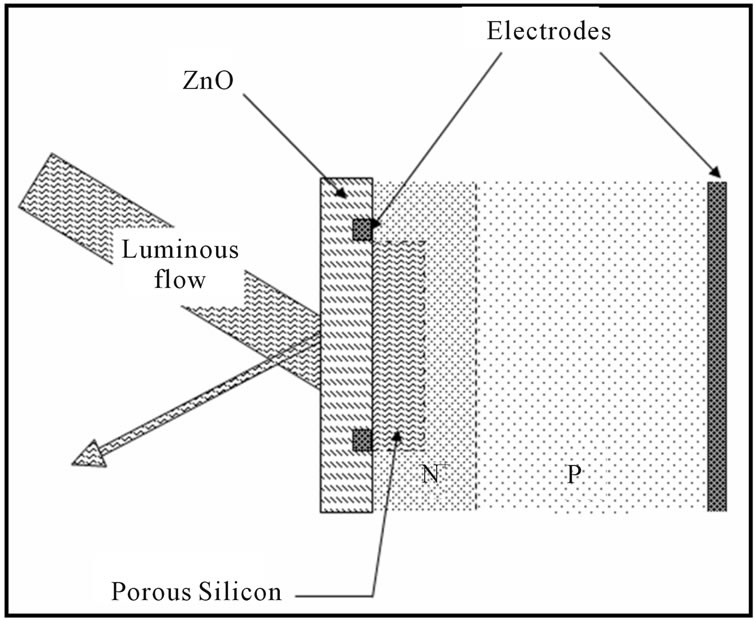
Figure 1. Diagrammatic representation of the PSiZ photodiode.
7.61 W and Rsh = 5.14 kW. Even if the value of Rs is very close to the usual one of the ideal photodiodes, we note that the value of Rsh is at least 3 orders of magnitude lower than the shunt resistance of good quality silicon detector. This means that the PSiZ exhibits quite high noise level [7]. But the study of the photodiode linearity has shown the ability to use our photodiode in a range up to a few mW [5]. The objective of this study is to ensure the stability of the sensitivity to an acceptable value of the signal to noise ratio. It has to be noted that in our case we lost in term of signal to noise ratio for low flow values but a gain of nearly a decade for the flow rates has been obtained compared to conventional photodiodes used in metrology laboratories.
During the last six years, the PSiZ photodiode was stored under controlled environment conditions (controlled temperature and humidity). During this monitoring period, the photodiode did not undergo any particular treatment (thermal, optical or other). The evolution of the characteristics of PSiZ photodiode was scanned with a cycle of measurement of about one year.
3. Study of the Reflectivity Stability
The optical study performed relates to the measurement of the total spectral reflectivity of the photodiode (the specular reflectivity and that diffused) definitively manufactured in 2004.
Figure 2 shows the reflectivity measurements results for the PSiZ photodiode according to the wavelength. These results were accumulated over six years with about one year measurement cycle. The obtained results show a good regularity in reflectivity along time and this for all the wavelengths between 400 nm and 800 nm approximately.
Figure 3 presents the average value of the reflection coefficient over all the duration of the study and for each wavelength associated with its experimental uncertainty (at 1s level). The maximum uncertainty recorded is equal to 0.55% at 400 nm (1.10% at 2s level). The minimum uncertainty recorded is equal to 0.15% at 510 nm (0.30% at 2s level). The average of the averages is equal to 6.93% with an experimental uncertainty of about 0.16% (0.32% at 2s level). Moreover, the study of the reflection coefficient for each wavelength and for all the duration of study is also comforting for its stability.
Taking into account the results obtained and uncertainty of calibration associated with the measurement with the radiations which is equal to a few 10−3, thus we can suppose that our photodiode is stable and consequently it has not deteriorated over time. This result is considered to be interesting for the realization of transfer detectors for optical radiations measurements since this constancy observed in the reflectivity represents a very invaluable gain in the stability of the photodiode spectral
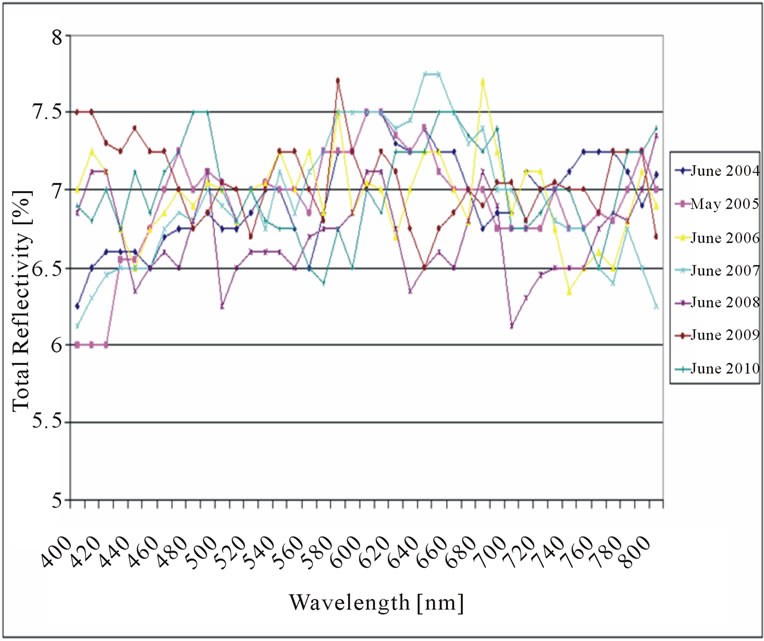
Figure 2. Measurements of the reflectivity of the PSiZ photodiode according to the wavelength for about one year cycle of measurement.
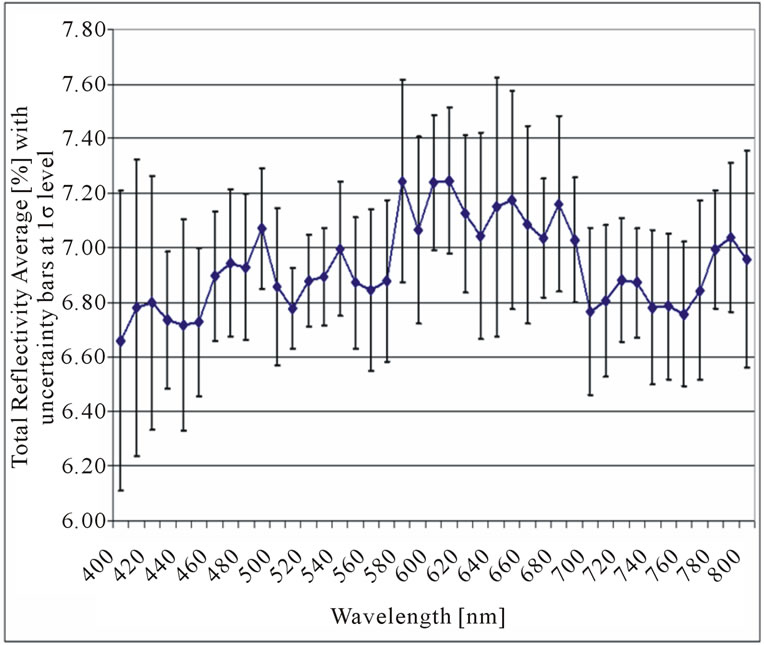
Figure 3. Variation of the reflection coefficient according to the wavelength.
sensitivity which strongly depends on the fluctuation of the associated reflection coefficient. Indeed the spectral sensitivity of the photodiode is given by the following equation:
 (1) [8],
(1) [8],
where;
S is the sensitivity of the photodiodeh is the internal quantum efficiencyl is the wavelengthh is Plank’s Constante is the electron chargec is Light’s speedr is the reflection coefficient.
4. Study of the Series (Rs) and Shunt (Rsh) Resistances
The electric diagram equivalent of a photodiode is made up primarily of a current generator associated with:
• a rectifier diode D
• a capacity of the depletion zone (or junction) C
• a parallel resistance (or shunt) Rsh (or resistance of the depletion zone or junction) which takes account of the leakage current by the edges of the photodiode
• a series resistance Rs which translates the phenomena of dependent resistances of contact on the one hand, with the grid before and with the back contact and on the other hand, the base course and of the zone before photodiode (resistance of the non-depleted zone).
Figure 4 gives the electric diagram of a photodiode lit by a flow not modulated by taking into account of all its components.
Current IE is divided into the three following currents:
■ the current crossing the diode:
 where Isat is the saturation current of the diode and VD is the terminal voltage of the diode [9,10]and
where Isat is the saturation current of the diode and VD is the terminal voltage of the diode [9,10]and
■ the current I’ crossing the shunt resistance Rsh and having as expression  where V0 is the terminal voltage of the load resistance Rch;
where V0 is the terminal voltage of the load resistance Rch;
■ current I0 crossing the resistance Rs towards the load.
With the help of the equations above, the current I0 (I0 = IE – ID – I') becomes:
 (2) [7,11],
(2) [7,11],
where
■ q: electrical charge;
■ k: the Boltzmann’s constant;
■ T: the junction temperature in Kelvin.
Figure 5 represents the electric answer I-V in darkness of the photodiode along the duration of the study. The shape of the experimental I-V response of the photodiode
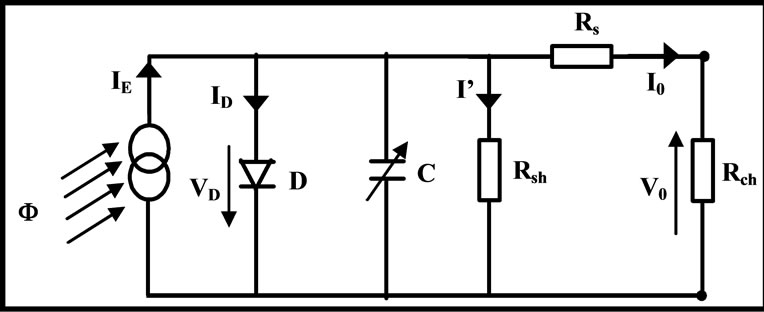
Figure 4. Equivalent circuit of the photodiode in photovoltaic mode and under a flow not modulated.
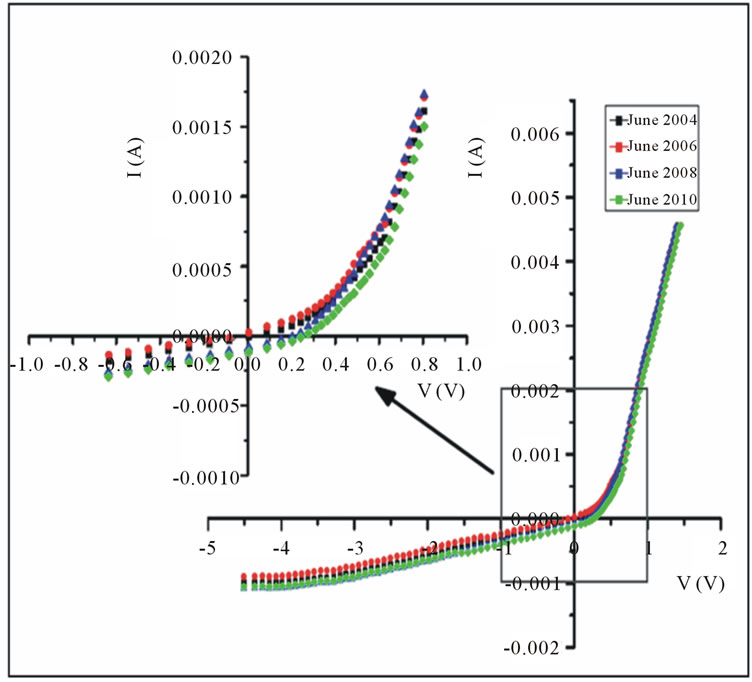
Figure 5. The electric answer I-V in darkness of the photodiode along the duration of the study.
agrees well with that of the characteristics of the marketed photodiodes. These electric characteristics were given initially at the development step of the photodiode in 2004. Then they were given every six months approximately and this in order to study their fluctuation over time. The method of measurement of the resistances Rs and Rsh was largely detailed in several publications [9,10].
In order to be able to determine the series and shunt resistances, the corresponding characteristics Ln(I) = f(V) has been traced, starting from the experimental responses the I-V advantage of the study of the characteristics Ln(I) = f(V) is to show in an efficient way the various modes of conduction, of being able to locate them according to the voltage and to roughly determine the series and shunt resistances. Figures 6 and 7 give the evolution over time of the series and shunt resistances of the photodiode. The measurement results show that the structure of the PSiZ photodiode always keeps characteristics very close to those of the ideal photodiodes.
The shunt and series resistances are gathered in table 1 and they are on average equal to 5.14 kW and 7.61 W respectively. By considering a rectangular distribution of the values, the associated uncertainties are equal to 0.01 kW and 0.04 W respectively. Since these resistances are the internal physical characteristics of the photodiode, the observed variations of the stability are due, on the one hand to the systematic errors of the electric assembly making it possible to raise answers I-V, and on the other hand to the methods used for the determination of these resistances.
As the PsiZ photodiode has suffered, during storage, no treatment (optical, thermal, acoustic or other) which could cause internal physical damage, the stability of

Figure 6. Evolution of the shunt resistance according to time.

Figure 7. Evolution of the series resistance according to time.

Table 1. Measurements of the shunt and series resistances.
series and shunt resistances contributes to the stability of the final internal quantum efficiency.
5. Conclusion
The results of a stability study concerning the optical and electric characteristics of a PSiZ photodiode during approximately 6 years confirm the stability of the spectral response of the photodiode. Thus, this device does not require any treatment or process of regeneration since it does not present any deterioration indications. Consequently, this photodiode can give us confidence on its use as a Tunisian Transfer Standard in the field of radiometric measurements (visible field). This result is very encouraging since it will allow us to build a spectrophoto-radiometric national scale. Also, a study of other properties such as the linearity was undertaken in order to be able to use this original structure to design and realize radiation trap detectors; taking advantage of this type of detectors which have proved their improved performances.
REFERENCES
- O. Touayar, B. Rougié, J.-M. Coutin and J. Bastié, “Measurement of the Reflectance of the INM Cryogenic Radiometer Cavity at Several Wavelengths,” Metrologia, Vol. 35, No. 4, 1998, p. 387. doi:10.1088/0026-1394/35/4/28
- T. Saito, et al., “Group III-Nitride Semiconductor Schottky Barrier Photodiodes for Radiometric Use in the UV and VUV Regions,” Metrologia, Vol. 46, No. 4, 2009, p. 272. doi:10.1088/0026-1394/46/4/S26
- M. Richter, et al., “The PTB High-Accuracy Spectral Responsitivity Scale in the Ultraviolet,” Metrologia, Vol. 37, No. 5, 2000, p. 515. doi:10.1088/0026-1394/37/5/37
- L. Shi, et al., “Optical Stability Investigation of High- Performance Silicon-Based VUV Photodiodes,” IEEE Sensors, Kona, 1-4 November 2010, pp. 132-135. doi:10.1109/ICSENS.2010.5690669
- Z. Ben Achour, O. Touayar, E. Akkari, J. Bastié, B. Bessais and J. Ben Brahim, “Study and Realization of a Transfer Detector Based on Porous Silicon for Radiometric Measurements,” Nuclear Instrumentation and Methods in Physics Research A, Vol. 579, No. 3, 2007, pp. 1117-1121. doi:10.1016/j.nima.2006.12.035
- I. Mellouki, O. Touayar, T. Ktari, F. Saadallah, J. Bastié and N. Yacoubi, “Study and Realization of a Trap Pyroelectric Detector for Absolute High Radiant Powers and Energies,” Measurement Science and Technology, Vol. 15, No. 2, 2004, p. 384. doi:10.1088/0957-0233/15/2/011
- W. R. Blevin and J. Geist, “Influence of Black Coating of Pyroelectric Detectors,” Applied Optics, Vol. 13, No. 5, 1974, pp. 1171-1178. doi:10.1364/AO.13.001171
- J. Bastié, B. Andasse, B. Mercier and O. Touayar, “The Calibration of Germanium Photodetectors Used for the Measurements in the Field of Optical Fiber Telecommunication,” Proceedings of the SPIE 14th Symposium on Photonic Measurements, Sopron, 1 June 1992, p. 1712.
- J. Lehman, E. Theocharous, G. Eppeldauer and C. Pannell, “Gold Black Coatings for Freestanding Pyroelectric Detectors,” Measurement Science and Technology, Vol. 14, No. 7, 2003, pp. 916-922. doi:10.1088/0957-0233/14/7/304
- I. Mellouki, O. Touayar, T. Ktari and N. Yacoubi, “Deposition and Characterization of Graphite-Black Coating for Absolute Pyroelectric Detectors,” Infrared physics and technology, Vol. 45, No. 4, 2004, pp. 273-279. doi:10.1016/j.infrared.2003.11.010
- J.-F. Power and A. Mandelis, “Photopyroelectric ThinFilm Instrumentation and Impulse Response Detector Part I. A Theoretical Model,” Review of Scientific Instruments, Vol. 58, No. 11, 1987, pp. 2018-2023. doi:10.1063/1.1139509
NOTES
*Corresponding author.

